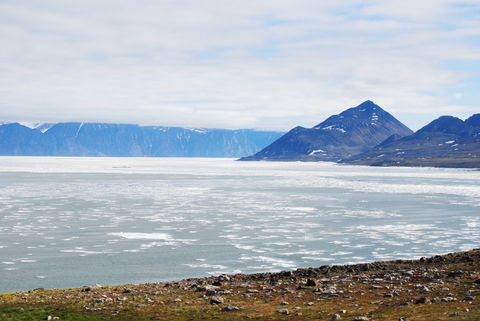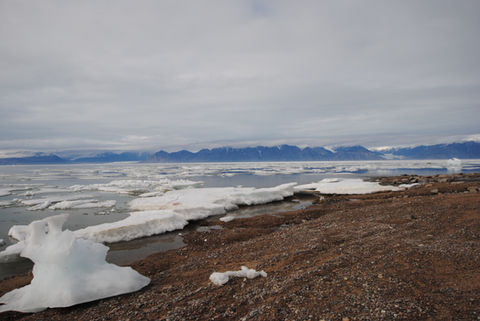Pond Inlet, Nunavut
Expanded Leadership to Study Water Quality
Tim Anaviapik Soucie is the founder and leader of the Pond Inlet Water Quality Monitoring Project that has been running since 2014.
“I started this project from being encouraged by community members and Elders, and to answer the many facebook outcries from residents, complaining of stomach illness. Our community had no equipment, no capacity back then to research water”.
The main goal of this project is to develop the capacity to research and monitor the water quality in the community and look for new potential water sources. The Pond Inlet Water Quality Monitoring Project informs local and regional decision-making on water protection and planning.
Results from the Expanded Leadership to Study Water Quality
Results
-
Contributes to the Enhancement of Inuit Control in Education
-
Contributes to Revitalization of Culture and Language
-
Contributes to Community Well-Being
-
Blending of Indigenous with Western
-
Program is Mutually Sustaining (Bringing Elders, Adults and Youth together; rebuild those lost relations that result in learning from each other)
-
Capacity Building through Partnerships (Local and Global)
-
Need to Solidify Programs like this, that work, Build Networks to Share Resources
Challenges
-
Sustainability of Program, Tied in Part to Funding (Should have year-round funding, full time position for Project Lead, as it was, funding was always short-lived and project driven)
-
Infrastructure (Laboratory Space)
-
Local Capacity & Leadership to Sustain Program
-
Develop Educational Infrastructure & Pathways (From this Program into Adult Education Programs and Jobs in Environmental Monitoring)


summary of the project evolution, Jrene Rahm, 2020
Launch of Movie Makkuktut in Arviat, 2016
Through a collaboration between Arviat Film Society and ARCTIConnexion, two youth from Arviat, Jamie Okatsiak & Samuel Kunuk Kanatuak Pauppa pursued a two-week internship with a professional movie production team in Québec City and members of ARCTIConnexion and Gordon Billard from Arviat Film Society.
Together, they developed a short documentary on a topic of their own choice. That documentary was then shared with the community during a visit in Arviat by Jrene Rahm, Vincent L’Hérault & Marie-Hélène Truchon, as part of this project.
Origin of Project and Program
"We wanted to develop a project that would provide us with the opportunity to conduct serious research and answer the preoccupations of our community in a way that would build our skills and knowledge for the benefit of the community. We found out that the best way to achieve these goals was to lead the research ourselves. Tim Anaviapik-Soucie"[T. Anaviapik-Soucie, Director of Program]]
Pride in an all Inuit Team
"Having pride in an all Inuit team, not being run [by outsiders], it’s a community driven project, community driven project, community concerns, and it’s run by Inuit." [T. Anaviapik-Soucie, Director of Program]
"Having an Inuit leader just gives them pride, and they’ve said it time and time again, it’ll empower them, they can maybe do their own some day." [T. Anaviapik-Soucie, Director of Program]
Inuit moving ahead, getting ahead, kind of, it’s part of the decolonization process. And it’s just great to be a part of it.
[T. Anaviapik-Soucie, Director of Program]
Inuit as Leaders
It was an all Inuk team, or it was mainly Inuit leading it, so it gave like direct benefit to Inuit right away. It had direct benefit to people and to families, like this family the community so the community benefits from it. It’s like very great to see community benefits from projects, especially meaningful projects like that.
[T. Arreak, Co-Director of Program]
Program Responds to Community Needs
Well, it’s what the community wants, it has a direct impact right away and if they want information, we’ll give them information very fast, instead of like some projects which were just like, just send a report to the hamlet… and then, sometimes, they are not given information back. But with program being in the community, we can give information back right away. [T. Arreak, Co-Director of Program]
Being on the Land
There’s something out there, in the environment, that I’m always eager to learn. Being out there, kind of clear your mind, not to think too much in a negative way, more a positive way. And I am always envious of people going out on the land to go to work. [T. Arreak, Co-Director of Program]
It’s very important to be out on the land. To bring both elders and youth, so combining three different generations, youth, elders and the middle, which is Tim and me, so can teach both sides, teaching is a two-way thing then.
[T. Arreak, Co-Director of Program]
It really opened my eyes about the environment and to care for it more, so that was, it’s been an eye opening, very amazing summer for me. [Youth M., 2015]
My favorite part was going to the iceberg last year and get the water, or even to the river, and learn how to use the equipment, learn about how fast a river is, how cold, the temperature, and where to get the invertebrates.
[Youth E., 2015]
Being with Elders, Learning from Each Other
"I also like talking to elders, listening to their stories, and getting answers, I love talking to elders, most of the time because they know anything, and I like talking Inuktitut a lot, because I am Inuk and it’s my language." [Youth E., 2015]
"The elders told me they were proud, they told me to keep my head up and to ignore anyone that puts me down in that way… I started making them tea, I helped set up their tent for them and I carry a lot of the stuff for them…I felt useful that I could teach someone [the elder] with a lifetime of experience to learn something new into their life" [Youth P., 2015]













